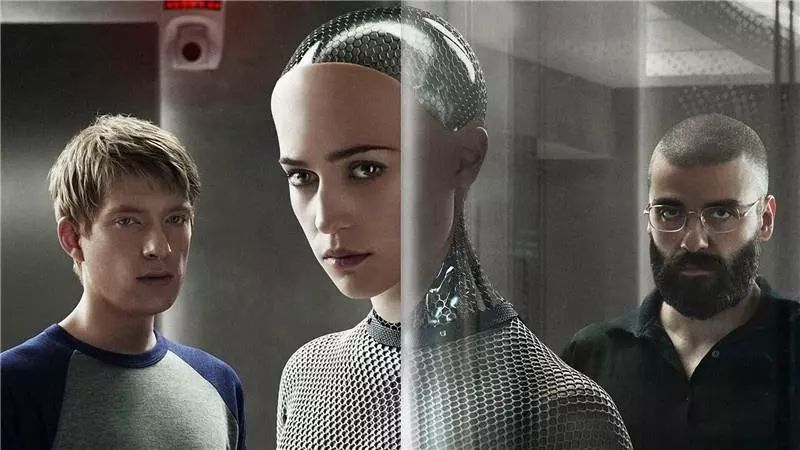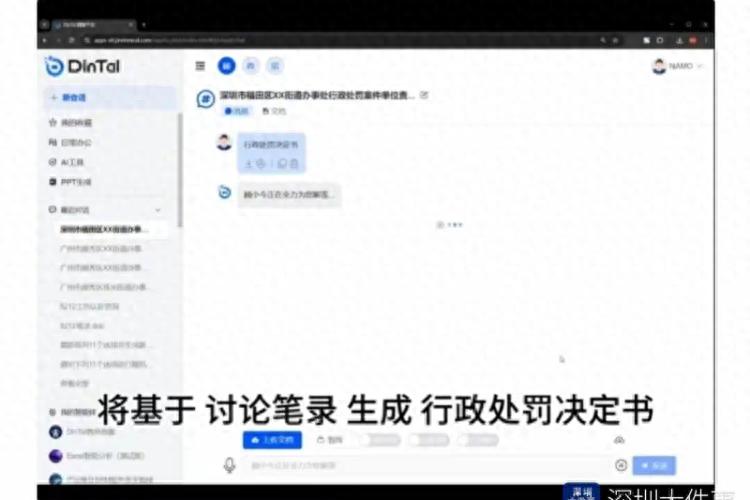The Ethical Paradigm Of Artificial Intelligence In Science Fiction Novels
The Ethical Paradigm Of Artificial Intelligence In Science Fiction Novels
At present, the most cutting-edge artificial intelligence technology is represented by ChatGPT, mainly involving computing science, intending to imitate human language and thinking, and then creating computer programs equivalent to human intelligence.

Looking at the ethical issues of artificial intelligence from the perspective of science fiction is a new topic in current interdisciplinary research. At present, the most cutting-edge artificial intelligence technology is represented by it, mainly involving computing science, intending to imitate human language and thinking, and then creating computer programs that are equivalent (or even surpass) human intelligence. With the rapid development and widespread application of artificial intelligence technology, it will inevitably cause a series of ethical problems in society. Especially with the support of Kuzwell's "singularity theory", many people are even worried that artificial intelligence may replace humans in the future after passing the Turing test. In view of this, research on ethical issues related to artificial intelligence is not only necessary, but also imminent. It is interesting to note that experts from many disciplines often quote science fiction works to prove their views when debating. After all, the image of artificial intelligence in the story is more vivid and well-known to the public.
Compared with real technology, the description of artificial intelligence in science fiction novels is not limited to computing science, but has also expanded to broader fields such as robots (Robot), bionic people (), and Cyborg (). Moreover, science fiction writers' imagination and writing of "artificial intelligent life" far earlier than the concept of artificial intelligence was clearly proposed in 1956 (Dartmouth Conference). Regardless of the myths and legends of Daedalus () and Yanshi's creation of mankind, the mother of modern science fiction literature, the description of artificial intelligence in science fiction novels lasted for at least two hundred years. Compared with the difficult debate of "high and low" in the technological world, science fiction novels rely on the special advantage of "think experiment", relying on the writer's brilliant writing, the discussion of artificial intelligence and related ethics is more concrete, and the contradictions and conflicts are set are more intense, which can subtly influence readers' ethics through fascinating fictional stories.
Looking at the classic science fiction novels around the world, from many stories involving broad artificial intelligence, we can distinguish the four most basic ethical paradigms: theology, anthropocentrism, non-anthropocentrism, and post-humanism. After careful review, each paradigm contains a large amount of texts, and it also has long-standing cultural traditions and theoretical support.
1. Theological paradigm. As a type of literature that originated in the Western world, science fiction novels naturally cannot completely get rid of the religious influence represented by Christianity, and the subconscious of theology is hidden in many works. For example, Herman Melville ( )'s "Clock Tower" (1855), the author, as a Christian, refused to accept artificial intelligence life. According to the basic teachings of Christianity, people do not enjoy unrestrained freedom and must remain humble and obedient before God. However, some scientists in science fiction novels attempt to copy the miracle of God's creation, provoking God's authority by creating artificial intelligence, but ultimately unable to control their creations and have no choice but to fall into a desperate situation that is backfired. With the development of the times and the evolution of ideas, today's science fiction writers can explore the related theological issues of artificial intelligence more freely than their predecessors. For example, Mike's Creed of Robots (2008) analyzes the question of whether artificial intelligence should be allowed to have religious beliefs; Zoltan Eastwan's "Superhumanism Bet" (2013) clearly states that Jesus saved all living things, even artificial intelligence; Daniel Wilson's "Robot Revelation" (2011) tells the story of artificial intelligence proclaiming itself as a god, founding religion, and then ruling humanity. It can be said that the metaphysical thinking of such science fiction novels in specific theological fields is not inferior to scholastic philosophy.
2. Anthropocentrism paradigm. The human-computer ethical relationship in science fiction is the most popular with the "Three Laws of Robots" created by Asimov (Isaac). Behind it is a basic hierarchical iron law: artificial intelligence is born to be a slave to humans. This view was first explicitly proposed in "Ring Dance" (1942), and the collection of novels "I, Robots" published in 1950 systematically explained it. If the science fiction novels created after Asimov did not deliberately use artificial intelligence ethics as the object of discussion, most of them would adhere to the criterion of the three laws, such as Wei Yahua's "Dream in the Land of Gentleness" (1980). Because this implies the consensus in the ideological and cultural traditions: as "the essence of the universe and the primate of all things", human beings must be higher than other species on earth, and are naturally at the upper level in hierarchical relations. This kind of view is most famous for Aristotle's "nature ladder" theory and Kant's "man is the end itself". The ethics constructed based on this must be centered on mankind. From this point of view, even if artificial intelligence has life, it has no "soul" and still does not leave the category of "tools". It is "natural" to be servile by humans.
3. The non-anthropocentrism paradigm. While Asimov's three laws are widely circulated, many science fiction novels go the other way, trying to prove with exquisite stories and rigorous plot deductions: the ethical paradigm of anthropocentricism has fundamental flaws in presupposing human-computer relationships, and mechanical cybernetics and implicit jungle law are the cornerstones for the establishment of this hierarchy relationship, but technological changes are very likely to reverse the strength and weakness of both sides in the future. As Hegel proposed the "dialectics of master-slave relationship", the identities of masters and slaves are likely to be interchangeable. Even Asimov did not shy away from this contradiction, so the "question" of the Three Laws became an important theme in his later creations. In addition, some science fiction writers are constantly trying non-anthropocentrism options, drawing on the "emotional" view proposed by Aristotle in "Nicomaco Ethics" to try to enable humans and artificial intelligence to build a fair and friendly relationship. Since human emotions are complex and unpredictable, perhaps some people will have feelings similar to family affection when they get along with artificial intelligence day and night, such as Wang Jinkang's "Song of Life" (1995); some people will have feelings similar to friendship with artificial intelligence, such as Jiang Bo's "The Way of Machines" (2015); and some people even fall in love with artificial intelligence and eventually get married, such as Asimov's "The Two Hundred Years Old" (1976). Maybe outsiders will find it incredible, but the parties involved think that this relationship is no different from the relationship between humans. From this perspective, when artificial intelligence has emotions, it transcends the positioning of pure tools. Human ethical construction should also keep pace with the times and try to explore a reciprocal human-machine relationship.
4. Post-humanistic paradigm. Posthumans are a widely-watched scientific and science fiction issue in recent years. As a theoretical trend, it was formed and developed in the 1980s. Faced with the tendency of flesh and blood to be transformed by high-tech, a group of theorists represented by Donna believe that the process of natural evolution for tens of millions of years of human beings will eventually come to an end, and the curtain of artificial autonomous evolution is slowly opening up, and future post-humans (or "newcomers") will surpass today's human beings in all aspects (including but not limited to lifespan, physical fitness, and intelligence) ("Syborg Manifesto", 1985). Representatives of such science fiction novels include Marge's "He, Her, and It" (1991), Chen Qiufan's "The Wave" (2013), etc. Regarding the specific forms of posthumans, no one can make accurate predictions due to the uncertainty of technological development and conceptual evolution. The posthuman story in science fiction novels can be traced back to Poe's "The Man Who Used" (1839), which mainly describes the beauty of the philosophical body as a temporary trend. After the mid-20th century, the concept of Cyborg became popular, and a group of science fiction novels with Cyborg as the main character emerged. The representative work was Frederick Pohl's "Upgrade Man" (1976). In the 1980s when computers appeared, a special form of Cyborg (Cyborg) appeared more and more in science fiction novels, mainly discussing the fusion of computers and the human brain. Its representative work is William Giberson's "Neurowave" (1984). In the eyes of post-humanism fans, if humans want to achieve the "target of the sea of stars", they must undergo an ontological upgrade from ape to post-human, and artificial intelligence is an important driving force for this leap.
From the above analysis, it is not difficult to see that science fiction novels describe the ethics of artificial intelligence do not stick to the scientific and technological level of a specific era, but focus more on the deep integration with the evolution of human values. While criticizing instrumental rationality and promoting value rationality, it highlights the ultimate philosophical thinking. As a relatively advanced and far-reaching thought experiment, many science fiction stories focus on the fundamental philosophical issue of "what is a human being". Looking back at history, human thinking about this "Sphinx Mystery" has lasted for thousands of years, and every change in cultural concepts such as the Renaissance and the Enlightenment will trigger changes in the definition of "man". The "Sphinx Mystery" in ancient Greek legend is essentially a philosophical metaphor that separates humans from wild animals, declaring that humans have escaped from the stage of ignorance of eating raw meat and drinking blood and entered the period of civilization. The continuous writing of artificial intelligence stories by science fiction novels predicts the coming of the post-human era. After all, as a specific concept and knowledge type, "people" can only be staged: both the beginning and the end. Scholars who hold such views are most famous for Foucault. In "Charles and Things" (1966), he resolutely declared "the death of man", believing that in the foreseeable future, people in traditional concepts "will eventually be erased, like a face on the beach by the sea."
To sum up, the four paradigms of artificial intelligence ethics described in science fiction novels contain constructive optimistic and negative elements of pessimistic rejection. After reviewing the various opinions of various schools, the author has a prudent and neutral attitude towards the future construction of artificial intelligence ethics: based on the development of science and technology, species evolution, and the change of value concepts, humans as creators can only avoid the risk of "reverse to guest" of artificial intelligence, and then break the difficult-to-solve paradox of human-computer binary separation, and ultimately deduce the blueprint of sustainable development from the dimension of human-automatic "autocorrelation".





